Donate now to support the LLIFLE projects.
Your support is critical to our success.
Your support is critical to our success.
Echinopsis densispina var. amblayensis
Cact. d'Argentine 44 (1993), without basionym ref. et: Cact. d'Argentine ed. 2: 50. 1997 1998
Family: CACTACEAE
Cact. d'Argentine 44 (1993), without basionym ref. et: Cact. d'Argentine ed. 2: 50. 1997 1998
Family: CACTACEAE
= Echinopsis amblayensis (Rausch) Friedrich
Kakteen Sukk. 25(4): 82 (1974)
Accepted Scientific Name: Echinopsis haematantha (Speg.) D.R.Hunt
Bradleya 9: 88 (1991); et: Cact. d'Argentine ed. 2: 57, isonym. 1997 1998
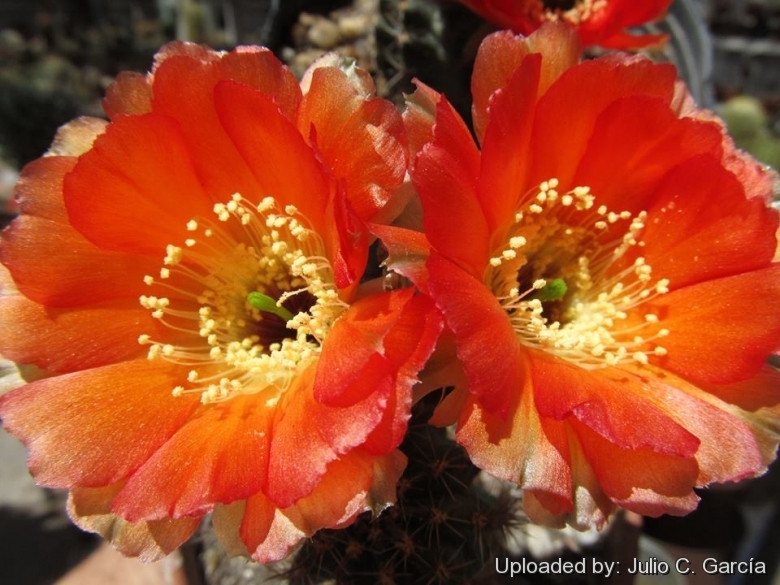
Echinopsis densispina var. amblayensis (Echinopsis amblayensis) Photo by: Julio C. García
The flowers is a unique bright orange colour with a nice mellow shade! It is impossible to adequately describe it. A real eye catcher!
The flowers is a unique bright orange colour with a nice mellow shade! It is impossible to adequately describe it. A real eye catcher!
Synonyms:
- Echinopsis amblayensis (Rausch) Friedrich
- Echinopsis densispina var. amblayensis (Rausch) J.G.Lamb.
- Lobivia amblayensis Rausch
- Lobivia haematantha var. amblayensis (Rausch) G.D.Rowley
- Lobivia haematantha subvar. amblayensis (Rausch) Rausch
See all synonyms of Echinopsis haematantha
back
Accepted name in llifle Database:Echinopsis haematantha (Speg.) D.R.Hunt
Bradleya 9: 88 (1991); et: Cact. d'Argentine ed. 2: 57, isonym. 1997 1998
Synonymy: 44
- Echinopsis haematantha (Speg.) D.R.Hunt
- Echinocactus haematanthus Speg.
- Lobivia haematantha (Speg.) Britton & Rose
- Echinopsis amblayensis (Rausch) Friedrich
- Echinopsis densispina var. amblayensis (Rausch) J.G.Lamb.
- Lobivia amblayensis Rausch
- Lobivia haematantha var. amblayensis (Rausch) G.D.Rowley
- Lobivia haematantha subvar. amblayensis (Rausch) Rausch
- Echinopsis amblayensis var. albispina (Rausch) Friedrich
- Echinopsis haematantha subs. chorrillosensis (Rausch) J.G.Lamb.
- Lobivia chorrillosensis Rausch
- Lobivia haematantha subs. chorrillosensis (Rausch) Rausch
- Lobivia haematantha var. chorrillosensis (Rausch) Rausch
- Lobivia haematantha subvar. chorrillosensis (Rausch) Rausch
- Echinopsis haematantha subs. elongata (Backeb.) J.G.Lamb.
- Echinopsis elongata (Backeb.) H.Friedrich & Glaetzle
- Lobivia elongata Backeb.
- Lobivia haematantha var. elongata (Backeb.) Rausch
- Echinopsis haematantha subs. hualfinensis (Rausch) J.G.Lamb.
- Echinopsis hualfinensis (Rausch) Friedrich & Glaetzle
- Lobivia haematantha var. hualfinensis (Rausch) Rausch
- Lobivia hualfinensis Rausch
- Echinopsis haematantha subs. hualfinensis f. variegata hort.
- Echinopsis haematantha subs. jasimanensis (Rausch) J.G.Lamb.
- Echinopsis haematantha var. kuehnrichii (Frič) J.G.Lamb.
- Andenea kuehnrichii Frič & Kreuz.
- Echinopsis kuehnrichii (Frič) Friedrich & Glaetzle
- Hymenorebutia kuehnrichii (Frič) F.Ritter
- Lobivia cincero Frič in Möller
- Lobivia haematantha subs. kuehnrichii (Frič) Rausch ex G.D.Rowley
- Lobivia haematantha var. kuehnrichii (Frič) Rausch
- Lobivia kuehnrichii Frič in Möller
- Lobivia drijveriana Backeb.
- Hymenorebutia drijveriana (Backeb.) F.Ritter
- Lobivia haematantha var. drijveriana (Backeb.) G.D.Rowley
- Lobivia drijveriana var. astranthema Backeb.
- Lobivia drijveriana var. aurantiaca Backeb.
- Lobivia drijveriana var. nobilis Backeb.
- Lobivia haematantha var. fechseri (Rausch) Rausch
- Lobivia haematantha subvar. fechseri (Rausch) Rausch
- Lobivia hualfinensis var. fechseri Rausch
- Lobivia mirabunda Backeb.
back
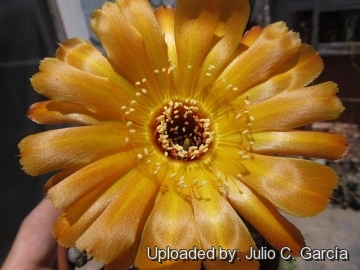
Echinopsis densispina var. amblayensis (Echinopsis amblayensis) Photo by: Julio C. García
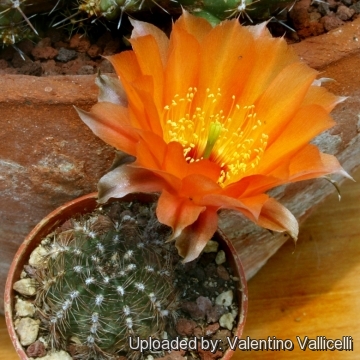
Echinopsis densispina var. amblayensis (Echinopsis amblayensis) Photo by: Valentino Vallicelli
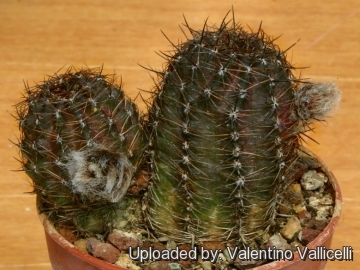
Echinopsis densispina var. amblayensis (Echinopsis amblayensis) Photo by: Valentino Vallicelli
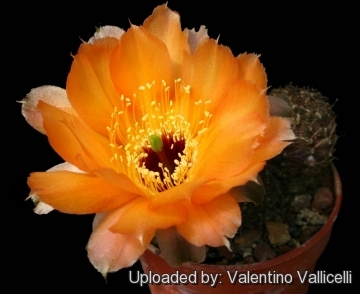
Echinopsis densispina var. amblayensis (Echinopsis amblayensis) Photo by: Valentino Vallicelli
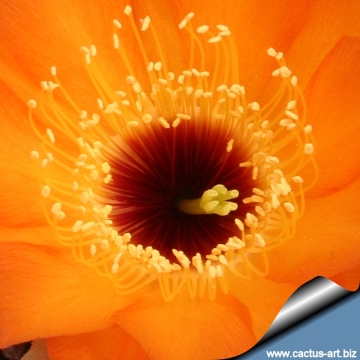
Echinopsis densispina var. amblayensis (Echinopsis amblayensis) Photo by: Cactus Art
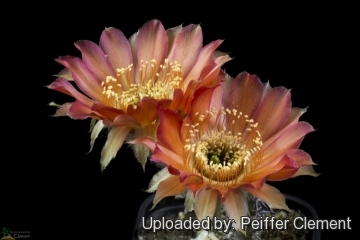
Lobivia amblayensis WR 19 Cachipampa to Cachi, Salta, Argentina (Echinopsis amblayensis) Photo by: Peiffer Clement
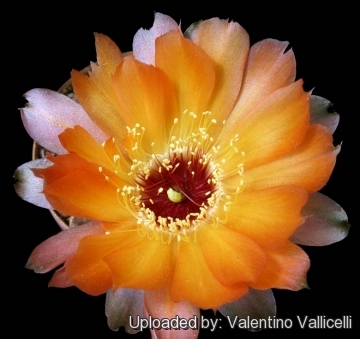
Echinopsis densispina var. amblayensis (Echinopsis amblayensis) Photo by: Valentino Vallicelli
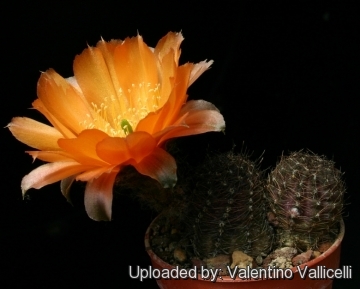
Echinopsis densispina var. amblayensis (Echinopsis amblayensis) Photo by: Valentino Vallicelli
| Your Actions | |
|---|---|
| Back to Echinopsis index | |
| Back to Cactaceae index | |
 |
Back to Cacti Encyclopedia index |








